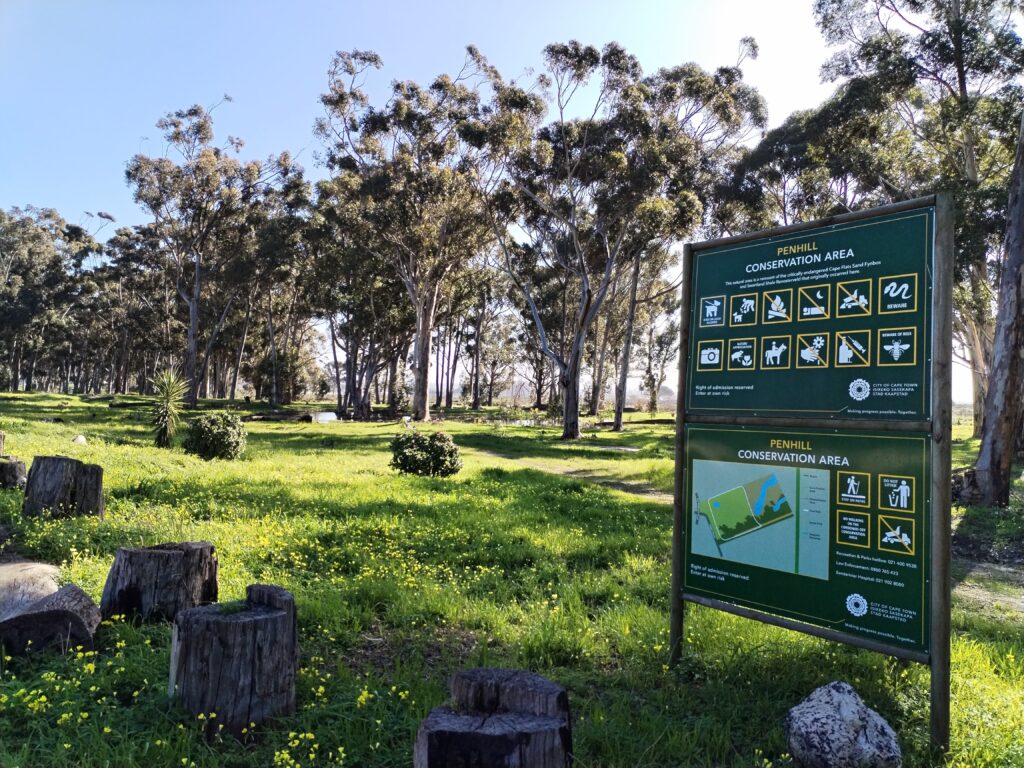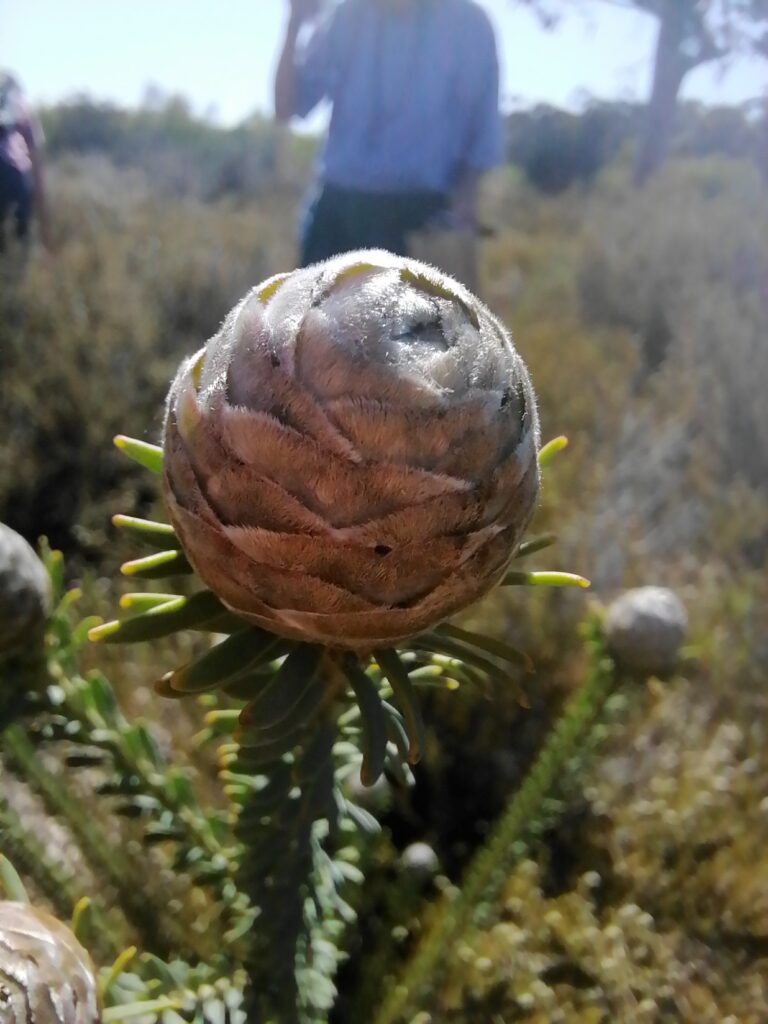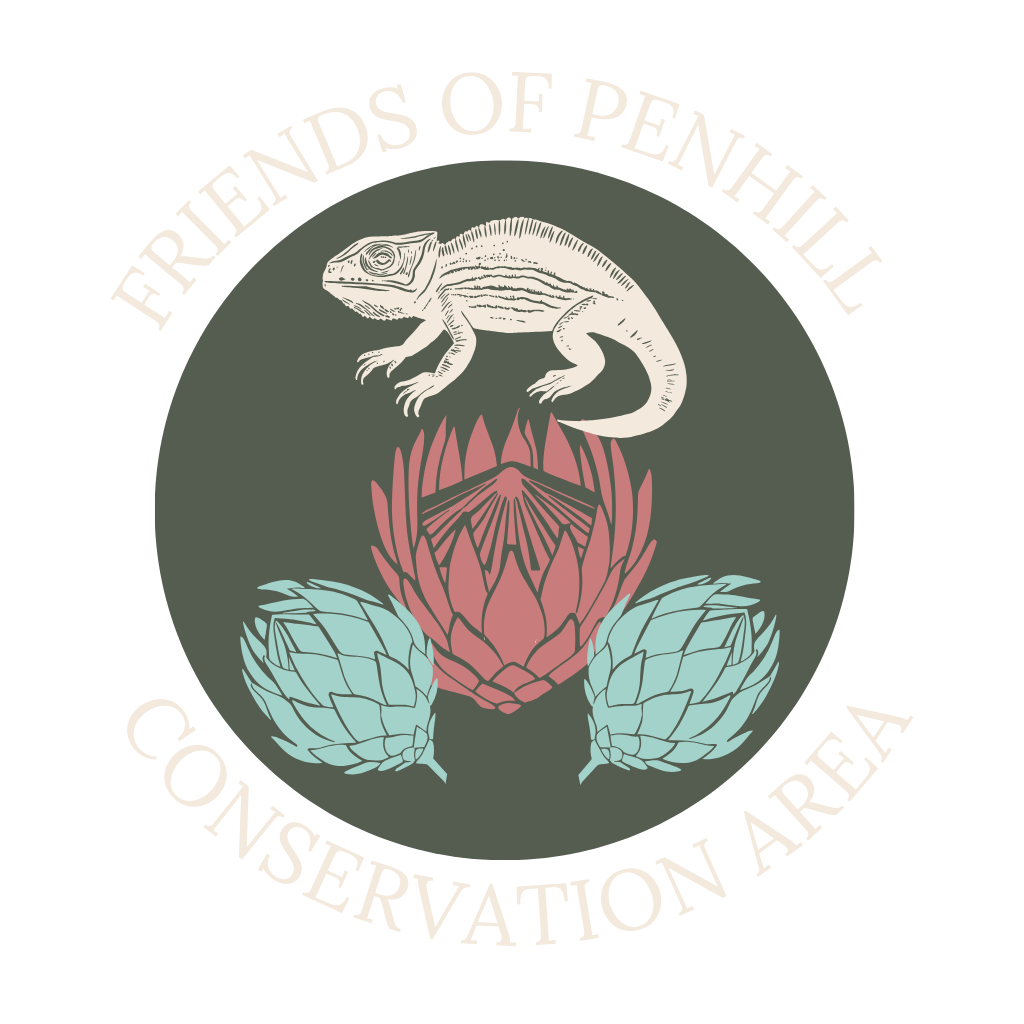We are a group of environmentally passionate residents from the adjacent Penhill Estate who established a non-profit organisation (NPO), the key aim of which is to promote conservation, education, and protection of the conservation area – all in accordance with the Basic Principles of Friends Groups statements and the City of Cape Town’s Local Biodiversity Strategy and Action Plan.

History of the Penhill Conservation Area
The City of Cape Town purchased the Conservation Area in 1993 as an extension to Welmoed Cemetery for future developments. However, due to the area’s remarkable biodiversity, it was established as a Biodiversity Agreement site with CapeNature in 2014, aligning with the City of Cape Town’s Local Biodiversity Strategy and Action Plan.
The Conservation Area remains City of Cape Town property and is managed by the Recreation and Parks Department as an extension to the Welmoed Cemetery.
Biodiversity
The Cape Flats Sand Fynbos (CFSF) and Swartland Shale Renosterveld are part of South Africa’s Fynbos Biome and Cape Floristic Region. These species-rich veld types are classified as Critically Endangered, with less than 1% of their area under conservation.
Flora
More than 260 plant species have been recorded here, including three critically endangered species: Lachenalia reflexa, Leucadendron levisanus, and Babiana villosula.

Fauna
The Conservation Area hosts several bird species, including African Harrier Hawks (Polyboroides typus), Spotted Eagle Owls (Bubo africanus), and Cape Spurfowl (Pternistis capensis).
The area is also home to diverse wildlife such as the Cape Fox (Vulpes chama), Angulate Tortoise (Chersina angulata), Parrot-beaked Tortoise (Homopus areolatus), Cape Rain Frog (Breviceps gibbosus), and Mole Snake (Pseudaspis cana). Invertebrates also thrive here, particularly butterflies that arrive in spring and wild bees that build their hives in shrubs and stumps.
